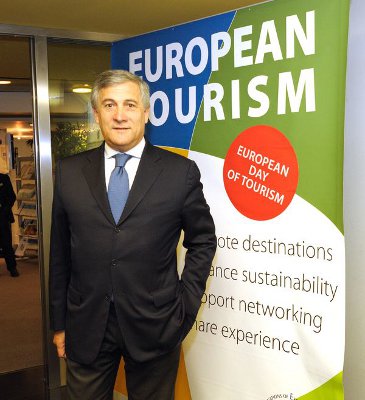Industry and Entrepreneurship
Tourism
Keeping Europe as top spot for tourism

Tourism makes people happier. It is a key element to evaluate quality of life and should be made more accessible to a higher number of people. At the same time it provides a vital boost to our economy.
The European Commission wants to make the tourism sector bigger and spread its turnover more equally across the year. To achieve this, it is crucial to improve and diversify our offer. We support the development of new sustainable business models, including transnational tourism products based on cultural and historical itineraries, lesser-known European Destinations of Excellence (EDEN), agritourism and thermal tourism. And we also promote innovation in traditional sub-sectors, such as beach tourism - which is by far the most popular choice among Europeans, but highly seasonal.
To attract those who are less likely to travel, the Commission launched the Calypso initiative. It aims to make tourism more inclusive by encouraging and facilitating low-season transnational tourism exchanges for young people, those with disabilities, low-income families and senior citizens. This is both a matter of equality and an economic issue. The untapped potential of the tourism industry is huge. We estimate that the EU tourism industry loses €160 billion a year because of the reduced accessibility of its facilities. Only small investments are needed to close this gap.
"Tourism is the third industry in Europe in terms of turnover and employs directly and indirectly 12% of the EU's entire working population. We should preserve this strength and use its untapped potential to create new jobs. In parallel, we should increase the number of people who have access to tourism services, which I believe is an excellent indicator of our quality of life."
One in four people living in the European Union are currently between 55 and 80 years old. Only 41% of them travel, despite having in most cases the resources and the time to do so. With its senior tourism initiative, the Commission aims to bring these seniors onboard, while at the same time increasing off-season tourism.
Our strategy also focuses on bringing in tourists from outside the EU. Europe is the world's first tourism destination with half of the global market. Today, international tourist arrivals amount to some 535 million, out of which the EU welcomes 401.2 million, and their number is expected to grow significantly in the coming years. We are committed to defend Europe's global leadership.
But the challenges ahead are growing. Competition from well-established rivals and emerging economies is getting tougher. In 2012, international visitors increased in the EU by 2.5%, whilst in the Asia-Pacific region the growth rate was 6.9%, in Africa 5.4% and in America 4.6%. The EU is lagging behind other regions in attracting new tourists from non-EU countries and in particular from emerging economies.
To reverse this trend, the first thing to do is to make easier for foreign tourists to enter the EU. By the end of 2013, the Commission intends to present a revised Visa Code aimed at facilitating emerging countries' citizens to obtain short-stay visas.
Clearer and better streamlined visa procedures are expected to significantly increase the number of international tourists coming to the EU, fostering economic growth and cultural exchanges. At the same time, the revision of the code will have no impact on security, as this remains EU's main priority. Security checks will remain unchanged.

